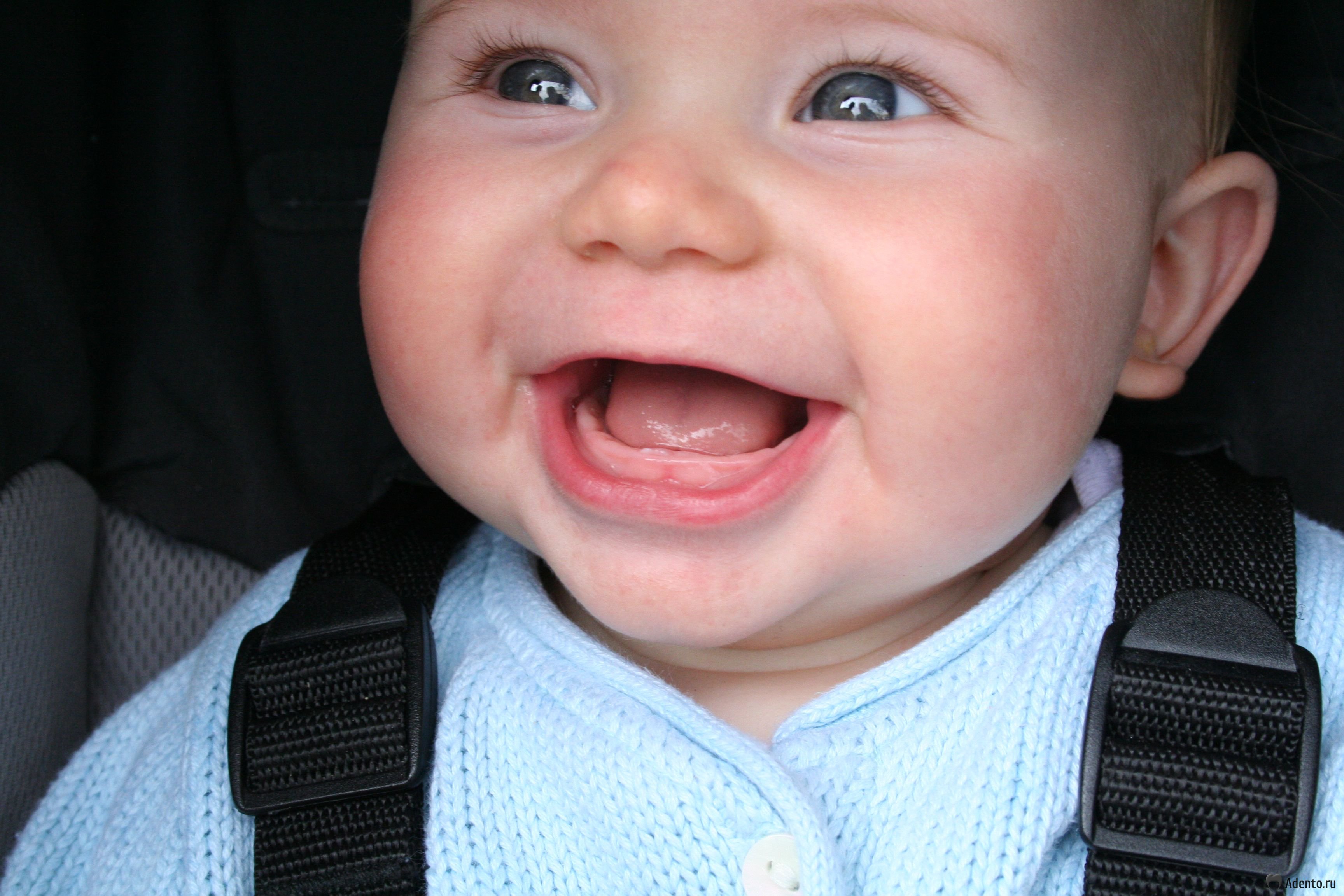
The article presents the regulatory deadlines for teething and changing teeth in children, the permissible deviations from the norm are indicated, the possible causes of the lack of teeth are described.
The content of the article
- When does the child cut the first teeth?
- Why a child in a year there is not a single tooth: what to do?
- Later teething in children: reasons
- The procedure for teething of dairy teeth in children: diagram for months
- How much should dairy teeth be in 5 - 6 months?
- How many dairy teeth should be in 7 - 8 months?
- How many dairy teeth should be in 9-10 months?
- How many dairy teeth should be in 11 - 12 months?
- How many dairy teeth should have a child in 1 year and 2 months?
- How much should dairy teeth be in a child at 1.5 - 1.7 years?
- How many dairy teeth should be in 2-2.5 years?
- How many dairy teeth should be in 3-4 years old?
- How many teeth should have a child in 5-6 years?
- How much should the teeth have a child at 7 to 9 years?
- How much should the teeth be a child in 10 - 12 years?
- How much should the teeth be in the child at 13-15 years old?
- Video: The first teeth are the school of Dr. Komarovsky
The appearance of the first tooths is joy and concern at the same time. It is difficult to overestimate this important stage. The appearance of teeth clearly shows that the child grows, develops, from a small lump, fully dependent on the mother, gradually turns into an independent person.
But sometimes the teeth are in no hurry to grow, which usually causes great concerns about the health of the baby.
When does the child cut the first teeth?
The graph of the appearance of teeth is individual and laid by nature. In some, the first teeth can be seen by 3 months, others please the toothy smile only by the year. Children's dentists do not consider such deviations for timing in the growth of pathology. Although there are certain norms of the growth of teeth growth.
The norm is considered to be a rubber to 6-9 months. Moreover, the temporary framework of teething is shifted - increasingly the first tooth grows after 8.5 months. In general, if there are no violations in the body, then the normal one is considered that the tooth has cut, regardless of age.
Therefore, if the eruption timing deviate from the average by 3-6 months, it is recommended to visit the pediatrician. The doctor will examine the child and determine possible violations.
If any doubt about the pathology of doctors sent to an endocrinologist, an X-ray, to other specialists, will check analyzes. If there are no violations, then the teeth are cut according to its own terms.
Note that in the timing of eruption affects:
- the process of pregnancy,
- were term labor or premature,
- complications during childbirth,
- maternal illness during pregnancy,
- disease and complications in the neonatal period.
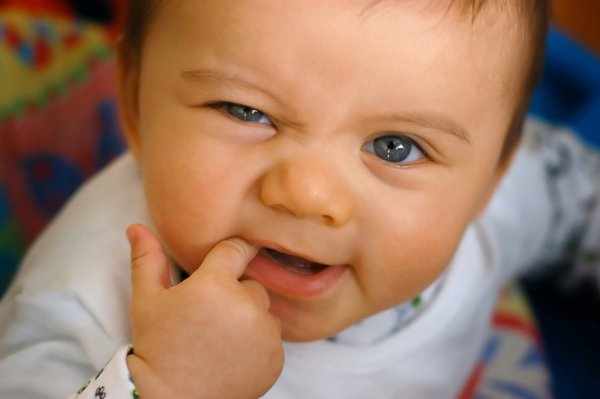
The process quite difficult eruption
Why a child a year is not a single tooth: what to do?
- First of all, do not be nervous, kids very sensitively catch the mood of mom! The process of teething your tension will not affect, but the mood of the baby - easily.
- Visit the dentist, who will assess the overall health of the gums, and determine whether further tests are required or it is necessary to wait just a little while.
Important: dentists allow the appearance of the teeth with a delay of 6 months! If no teeth at 14 months, the dentist must go must!
Speed \u200b\u200bup the teething alone is almost impossible. Sometimes prescribe calcium supplements to accelerate the growth of teeth, but special result this method is achieved.
It is better to prepare the gum:
- let the baby rubber teethers that blunts pain, massage the gums, relieve itching when cutting;
- let solid food: apple, bagel. Be careful not to leave your baby with one of these products in order to avoid contact with pieces of food into the throat. At the slightest tooth eruption, these products provide is not worth it - easily their child razgryzet.
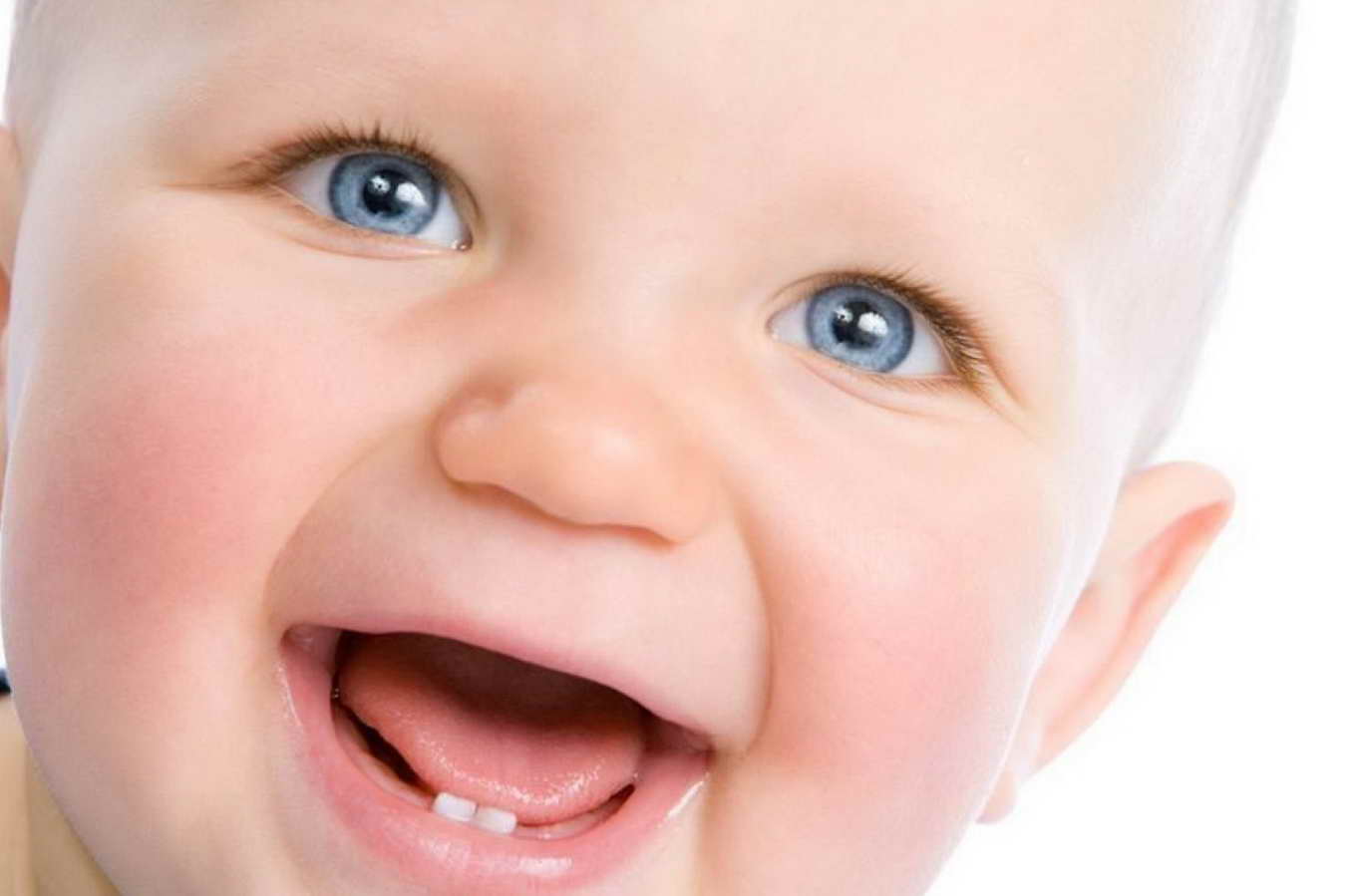
The first teeth
Delayed eruption of teeth in children: Causes
In the vast majority of the cause of the late eruption are especially a child's development. Also important hereditary factor. But sometimes medical consultation is still necessary.
Possible reasons for the lack of teeth:
- disorders of the intestine;
- rickets;
- incorrect (tilted) in the gums;
- closely spaced teeth germs in the gums;
- endocrine disorders;
- metabolic disease;
- systemic diseases;
- genetic disorders;
- no rudiments of teeth (rarely).
The most severe and extremely rare disease is the lack of teeth germs. Rudiments may be absent due to illness of mother during pregnancy, heredity.
The procedure for teething of dairy teeth in children: diagram for months
The deadlines for the set is only a landmark, and not a strict instruction. But they need to know, to consult a doctor in time.
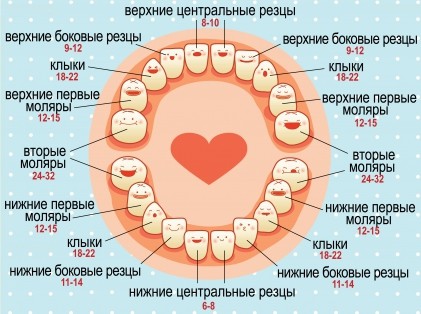
Scheme of averaged teething
To determine the amount of teeth, a formula has been developed that displays the dependence of the amount of teeth from age. But it is relevant only to two years of age.
M - 4 \u003d K
K - the number of teeth, pieces;
M is the age of the baby, calculated in the months.
Some sources are offered from the number of months lived by a child to take a digit 6. This calculation will also be faithful and is the lower indicator of average values. It should be remembered that these numbers are only the average indicators.
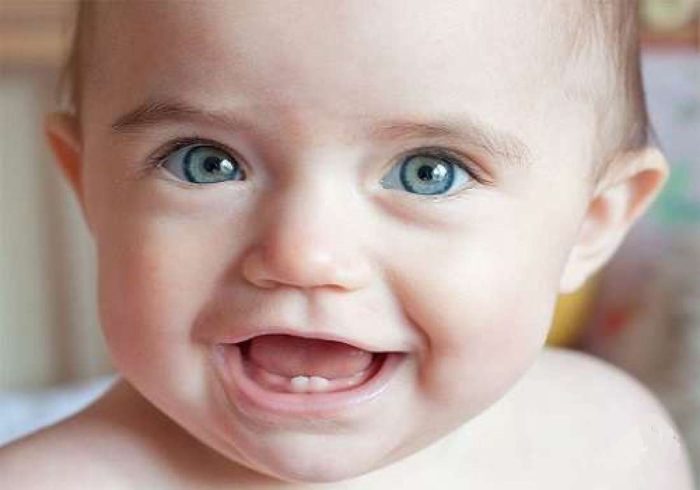
The first lower cutters
How much should dairy teeth be in 5 - 6 months?
The first teeth appear, which are lower central cutters. Tooths are only two, but care for them is needed. Clean these teeth with special soft silicone brushes. They do not damage gentle teeth and gums.
How many dairy teeth should be in 7 - 8 months?
The upper central teeth appear - the upper cutters. The child has already 4 tooth.
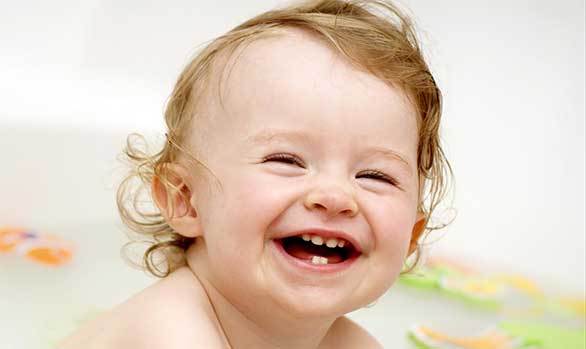
Upper side cutters grow first
How many dairy teeth should be in 9-10 months?
The upper side cutters grow. The total number of teeth is 6 pieces.
How many dairy teeth should be in 11 - 12 months?
By the year, the child pleases us with eight teeth, as the lower side cutters grow.
How many dairy teeth should have a child in 1 year and 2 months?
After a year, the first molars grow. They are chewing teeth and have a bigger crown. The crown of the upper jaw molar is a rhombus, and the crown of the lower jaw is a cube.
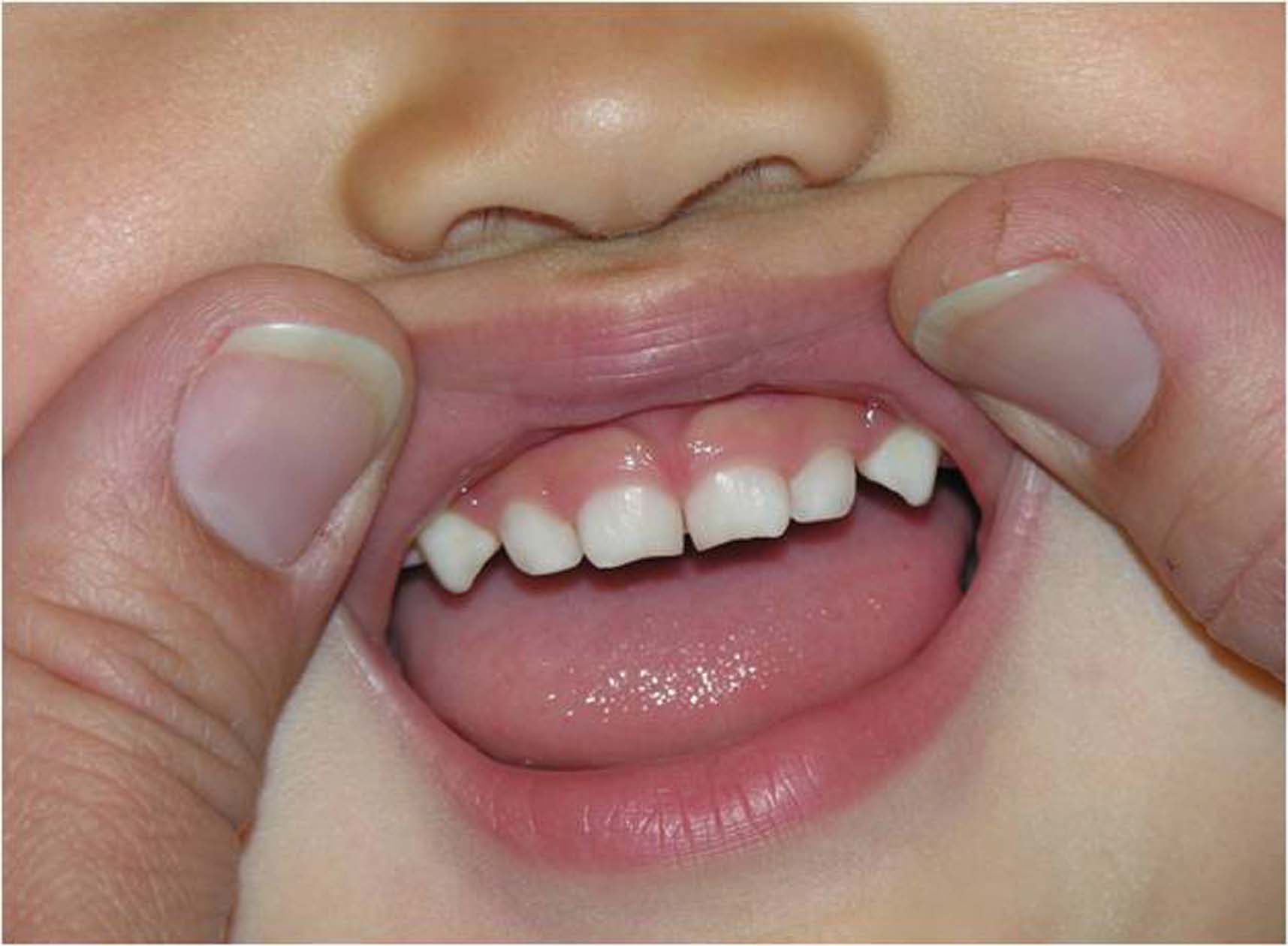
Upper fangs appeared
How much should dairy teeth be in a child at 1.5 - 1.7 years?
After molars, fangs grow. Ultimate teeth appear first. The total number of teeth is 16.
How many dairy teeth should be in 2-2.5 years?
This period marks the emergence of second molars. The lower molars are breaking to 2 years, the upper a little later. The child must have 20 teeth by the middle of the third year.

Best smile
How many dairy teeth should be in 3-4 years old?
The teething of dairy teeth has already stopped. The indigenous are not yet broken, so the child remains 20 dairy teeth.
This period is characterized by the formation of existing milk dental roots. The formation processes closer to 4 years will begin to flow into the process of resorption of dairy roots, since the next step will begin the growth of constant teeth.
You can show a child orthodontist. The doctor will determine the presence of a predisposition to any violations. The correction started at this age will avoid further more complex bite correction.
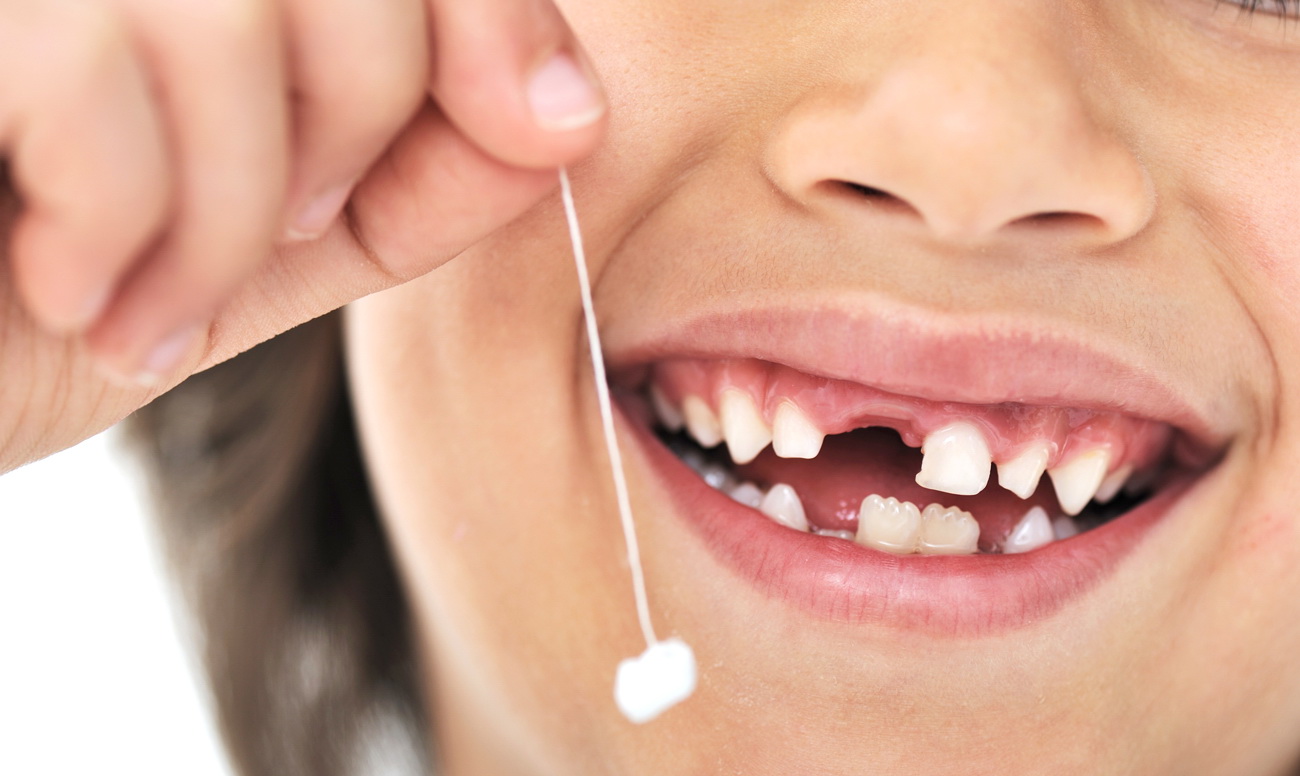
Changing the first teeth
How many teeth should have a child in 5-6 years?
The milk teeth who fulfilled their task are starting to change constant. The first are the lower central cutters. After a short period, the upper one is changing.
The first permanent molars are dispersed - chewing teeth appearing behind the last dairy. The first molar is a sixth tooth. Total teeth becomes 24.
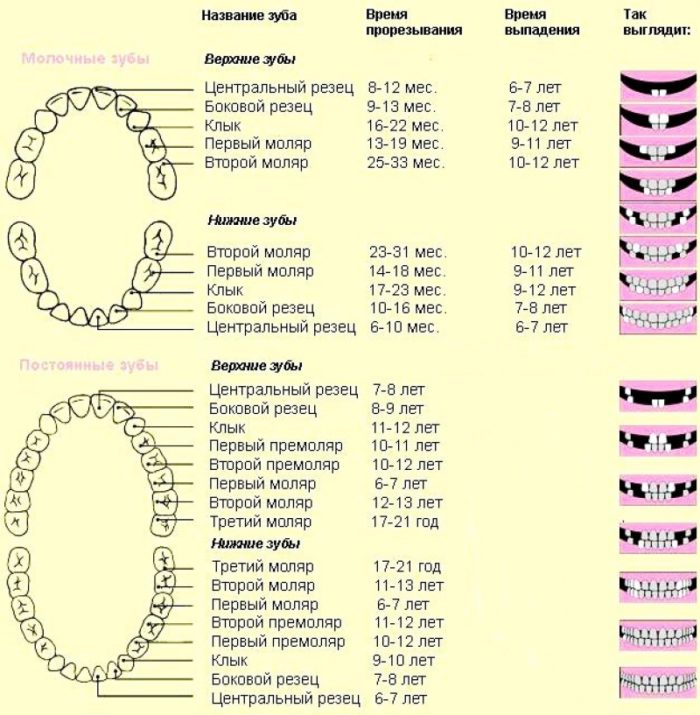
Scheme shift teeth
How much should the teeth have a child at 7 to 9 years?
Side cutters are changing. The lower constant side teeth grows over 7-8 years. A little later, the upper teeth will grow up - by 8-9 years.
How much should the teeth be a child in 10 - 12 years?
Entry into teenage age is marked by changing the first milk molars. Simultaneously changing fangs. First, the first upper molars change - for years to 10-11, and then the lower teeth are 11-12 years old. They are called the first premolars. The procedure for changing the fangs is the same.
New indigenous molars do not grow yet, the total number of teeth remains 24. Deviation of shifts for a year dentists are considered as an option norm.

The main thing is health!
How much should the teeth be in the child at 13-15 years old?
- The change of milk teeth. Second milk molars change, they are now called the second premolars. The first teeth grow the top teeth, then the bottom changes.
- The second constant molars grow up, these are seventh teeth.
- The latter grows third molars, these are eighth teeth. They also call the "teeth of wisdom." Their growth begins after 17 years. There are cases where the third molars began to grow after 60 years, but it is more exception. Sometimes these teeth never grow up, and X-ray can show the absence of adventures.
These teeth are considered a rudiment, as they are practically not affected when chewing food. But if they grew up, they are better to take care of them. The eighth teeth affect the bite, the formation of the tooth row, support their teeth, so that they "do not walked" in the jaw and did not break the bite.
